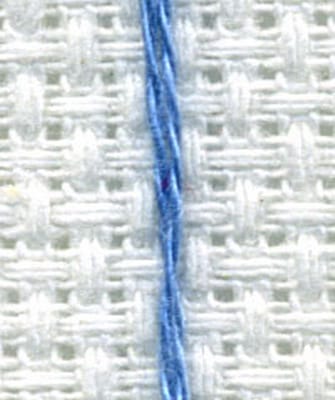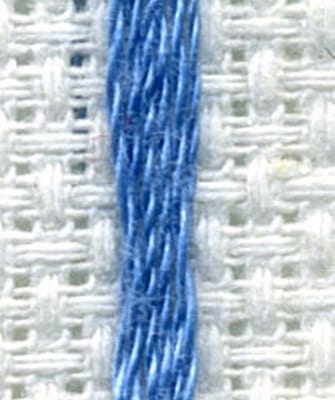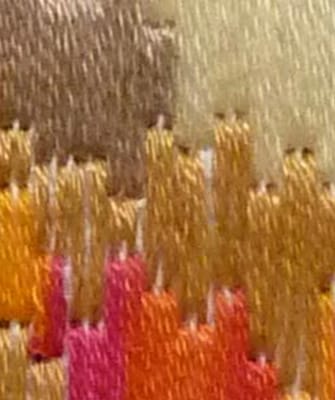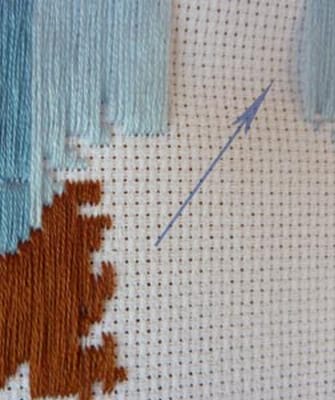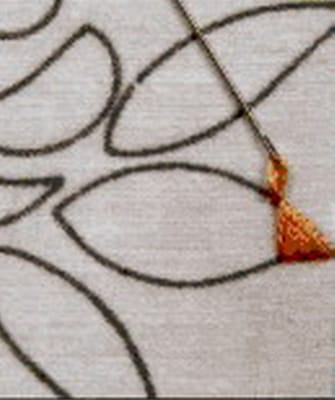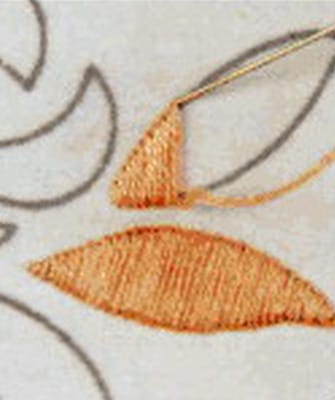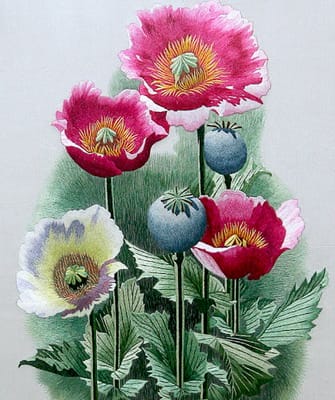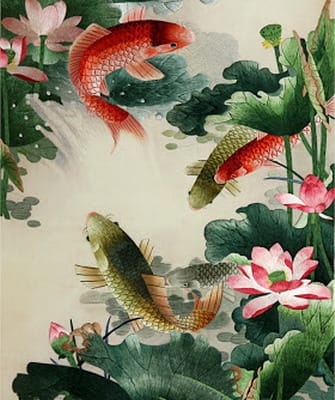Satin stitch embroidery: technique for beginners in ordinary and Chinese style, video
This elegant technique is reminiscent of painting – stitch by stitch, like pencil strokes or brush strokes, create real masterpieces.
This technique is considered one of the most difficult, although, having basic embroidery skills, it is not difficult to master it – the secret lies in the jewelry precision of the stitches. Smooth most accurately conveys subtle color nuances, the play of light and shadow, so it is most often used to reproduce floral motifs, landscapes, genre scenes and portraits. The pinnacle of craftsmanship is considered to be satin-stitch embroidered paintings, which belong to works of genuine art.
Stitch embroidery technique for beginners
The first steps in any business require careful preparation. In order to master the technique of satin stitch embroidery, a beginner needlewoman needs to master a few simple stitches that underlie it. But first, choose the right materials and tools.
Unlike most needlework techniques, this one does not require special materials and tools: a needle, a hoop, threads … But, first of all, you need a base, namely a dense, but elastic and well-kept fabric – the best, especially for the first experiments, ordinary calico will be, it perfectly meets all the requirements. Before starting work, it should be steamed with an iron, this will ensure that your embroidery will keep its shape perfectly in the future.
The hoops will turn out to be indispensable, during operation, the tension density of the base will ensure an even and smooth “run" of stitches, and as a result, beautiful, flawless embroidery.
When choosing threads, preference should be given to floss, they have the necessary softness and plasticity. This is very important, because the stitches, and they are in this technique – no more than 3-7 millimeters long – are laid out not only in a straight line, but also in circles. For the first works, it is better to choose cotton floss, it is much easier to handle than woolen, and even more so silk. The choice of colors of these threads allows you to realize any ideas.
The easiest and fastest way to work in this technique is “light stitch” or embroidery with strokes. Having fixed the thread on the wrong side with a flat knot, it is brought to the front side and a short “stroke” is made, stepping back just a couple of millimeters, the thread is again brought to the front side and the stitch is repeated. The length of the stitches can be different, you can fill the inner contour of the pattern in several layers, but the stitches must fit together as tightly as possible. To begin with, it is worth trying to make a “light smooth surface” without a pattern in order to work out the stitch step and feel how it “lays down”.
Stitch embroidery: execution technique
You need to start working in this technique by creating a contour. Any drawing with sufficiently large details can serve as the basis for it. Ordinary children’s "coloring pages" are ideal for a start. With the help of tracing paper and a thermal pencil, which is usually used in needlework – you only need an iron, the pattern is transferred to the base, which is tucked into the hoop.
The stitch from which they begin to work in the technique of satin stitch embroidery is “forward the needle”. The thread, fixed on the wrong side of the work, is brought to the front, and a short stitch is made – 2-3 millimeters. Having retreated a couple of millimeters, the stitch is repeated. This is how the contour of the drawing element is outlined, using satin or dashed stitches, and all its internal space is filled.
Satin stitch. The thread fixed on the wrong side is brought to the front side and the first stitch is made up to 7 millimeters long with free tension. Stepping back a little from the edge of the stitch, it is repeated in the opposite direction. The stitches should fit snugly against each other, they can be laid out both horizontally and vertically. But the most interesting result is the arrangement of satin stitches made obliquely diagonally.
Separate elements of the pattern can be made embossed and more voluminous if you first sew with a “forward needle” stitch not only the contour, but also the inner space of the pattern element – this technique is called “flooring”. And then close it with regular satin stitches.
Stitch embroidery technique does not set hard and fast rules. Stitches can be laid out both in one layer and in several, interesting effects are given by the texture of the surface, in which the stitches are overlapped. But to create a smooth, uniform embroidery surface, they must all be the same size.
It is worth paying attention to the movement of the thread, which can be clearly seen in the finished work. Horizontally, vertically or at an angle… how exactly it will be embroidered, for example, the crown of a tree or a leaf of a plant depends on the impression of the embroidery as a whole. Moreover, there are no ready-made schemes and instructions in this technique. Therefore, experienced embroiderers advise in no case not to rush to perform large-scale work, but to learn the technique gradually. It is better to feel it literally “with your fingertips” with flower arrangements that you should start with.
Stitch embroidery technique: video.
Chinese stitch embroidery technique
China is considered the birthplace of satin stitch embroidery, where this needlework has been considered a special type of elite art since ancient times. The paintings embroidered with silk on transparent silk amaze the imagination – two different plots are presented on different sides of one large-scale canvas. Such masterpieces in China are among the most expensive items of inheritance.
Historical traditions are reflected in modern techniques. The techniques that are used in the classical Chinese stitch embroidery technique are widely used today to create exclusive works.
The technique of Chinese embroidery requires a serious level of skill and experience, but with a creative approach and painstaking execution of canonical requirements, it allows you to create real masterpieces.
Surprisingly, there are no special secrets in it – the same stitches and careful selection of colors. It is worth considering that only a stylized oriental drawing or landscape can become a plot for such a work. As a basis, it is necessary to take a fabric of satin texture in black or dark blue and carefully work out combinations of shades of silk threads.
The principle of operation becomes clear on the example of one flower petal. According to the canons, its contour should be divided into at least three or four parts, each of which is embroidered in different directions with its own shade of color. And so it is with every detail of the work that is done with the usual “light smoothness” with or without “flooring”.
Getting familiar with satin stitch embroidery, one of the most sophisticated needlework techniques, is easier than it seems at first glance. But those who take it seriously warn: one has only to start…

